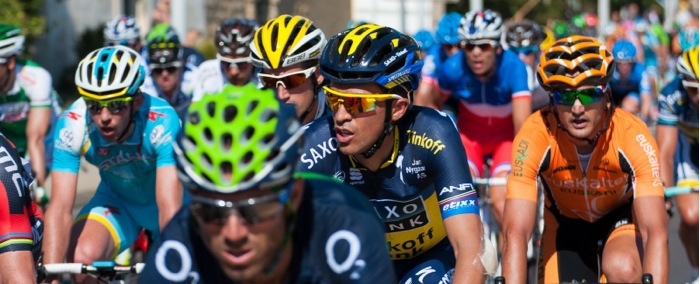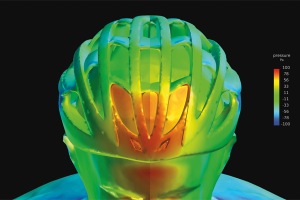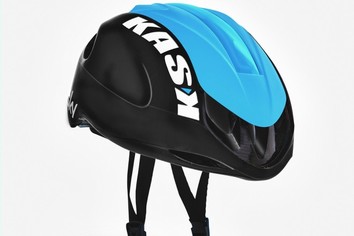
Imagine what you could spend a couple of hundred dollars on... I bet you weren't thinking along the lines of a new helmet! Today's market is flooded with choice, and when it comes to shopping for a new helmet, things are no different. Hopefully some clarification will help you choose your next 'stack hat' for summer.
Before even looking at budget, here are some key qualities to look for in a new helmet:
DIMENSIONS
Comparing one end of the scale to the other, a more expensive helmet will generally have more visual appeal when you wear it. As much as this is about safety, looks do play a major part in any retail purchase. This appeal comes down to the dimensions of the helmet, meaning a more expensive helmet will have a smaller exterior size than the 'mushroom head' look of some cheaper helmets.
FIT
Try before you buy - sometimes a more affordable helmet can be super comfortable, but in general it's the higher end helmet that has a superior fit, even going so far as providing gender specific helmets!

Photo: louisgarneau.com
RETENTION SYSTEMS
This refers to the adjuster on the back of your helmet, and is an important consideration in choosing a helmet. Some brands offer the basic yet effective 'pincher' on the back, which reduces the internal circumference of your helmet. Other brands prefer a similar system which distributes the adjustment over a greater area on the inside of your helmet. The latter option can offer a better fit for some.
AIR FLOW
Something you might not consider until that 100°F (40°C) day - check out the vents on your new investment. Does it offer sufficient air flow through the helmet and over your head?
Once you've narrowed down your criteria based on the above, you can then compare helmets within the brand you prefer. Any given brand will offer a range of helmets, with each one having an intended purpose. Your local bike shop can recommend something suitable, based on your intended use and subsequent riding style.
DID YOU KNOW? So what is the difference between a $60 and a $300 helmet? High end helmets are very light and will have lots of ventilation. In an average helmet this would result in compromising the structure and strength of the helmet shell, basically rendering it useless in regards to head protection. Expensive helmets overcome this by employing technologies like Kevlar and carbon reinforced skeletons, high density foam and many hours testing in an engineering laboratory.
If you really want the very best helmet that money can buy, look no further than these two examples. At the very pinnacle of technology, these helmets push the boundaries like never before:
Italian helmet manufacturer KASK have recently released their latest creation, just after it was used by the SKY Pro Cycling team in this year's Tour De France. Guaranteed to turn heads, this helmet offers incredible aerodynamics courtesy of a sliding wind blocker! If you'd like maximum air flow, just slide the cover back. If you want to save every micro second, slide the cover forwards and benefit from state-of-the-art aerodynamics.
Designed by University of Adelaide engineers, this helmet is used by the Orica greenEDGE Pro Cycling team.
"We had to understand the air flow around the helmet at all the various positions and head angles a rider takes while racing, from sitting upright, to sprinting with their heads down"
- Associate Professor Richard Kelso, Adelaide University representative
At maximum efficiency, this helmet reduces frontal head drag by a whopping 30 per cent!
As you can see, there's plenty to choose from when it comes to protecting your greatest asset. Spend some time working your way through the choices, and soon you'll find the boundaries of what's best suited for your cycling. Your local bike shop can offer the best advice based on their experience and customer feedback.
Helpful Buying Tips:
For more detail on helmet fitting and your responsibilities as a cyclist check out "Fitting a lid and the law"
- Find out if the brand you intend purchasing offers a 'crash replacement' period. Some brands offer as much as one year's use, and will replace your helmet for free if you crash it within that year. More commonly, brands will offer a percentage discount on a replacement helmet purchase.
- If you live in a country with strict helmet laws like, for example, Australia and some states in the US, avoid buying a helmet from an overseas online dealer. These helmets may not have been approved by the appropriate regulatory body, even if they are the exact helmet you have in your hand from a local dealer. If complications arise from an incident, this could become a sticking point.
- Enquire as to when your new helmet should be replaced. In most cases, it's advised that a helmet be replaced every two years, or after any impact. This is due to the material of your helmet hardening over time, and therefore reducing its ability to dissipate shock during an accident.




